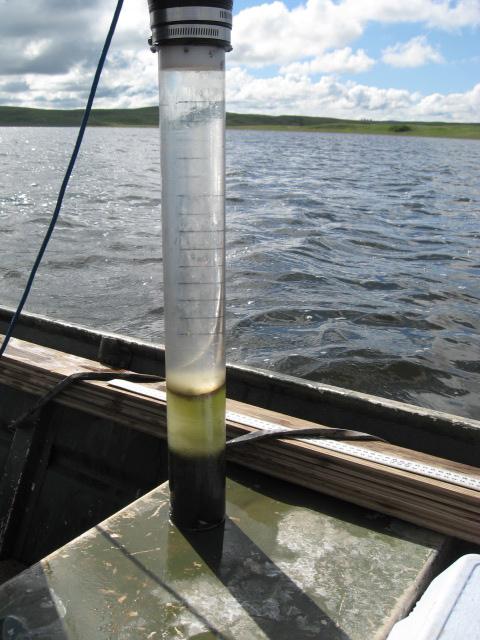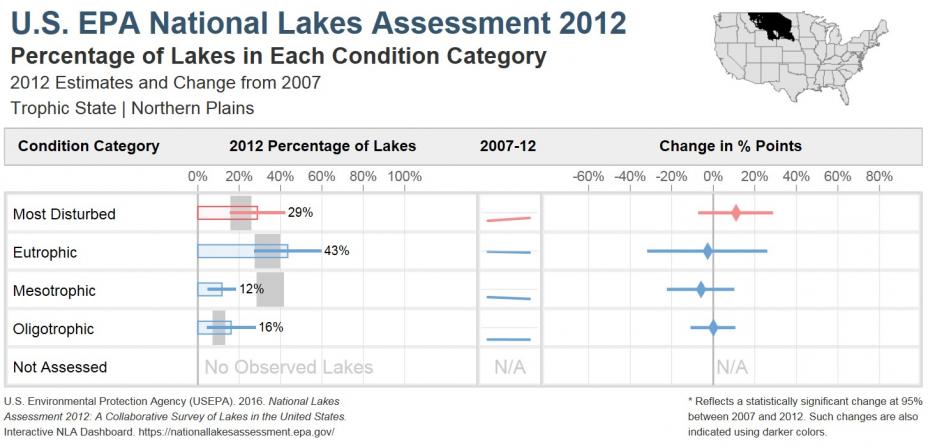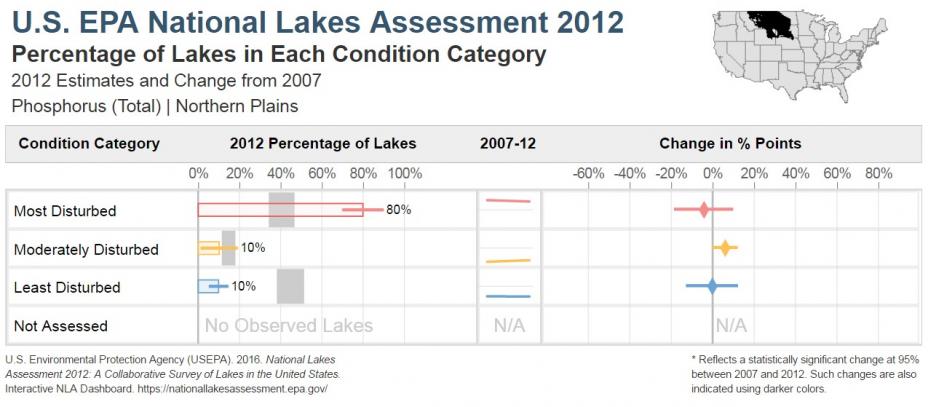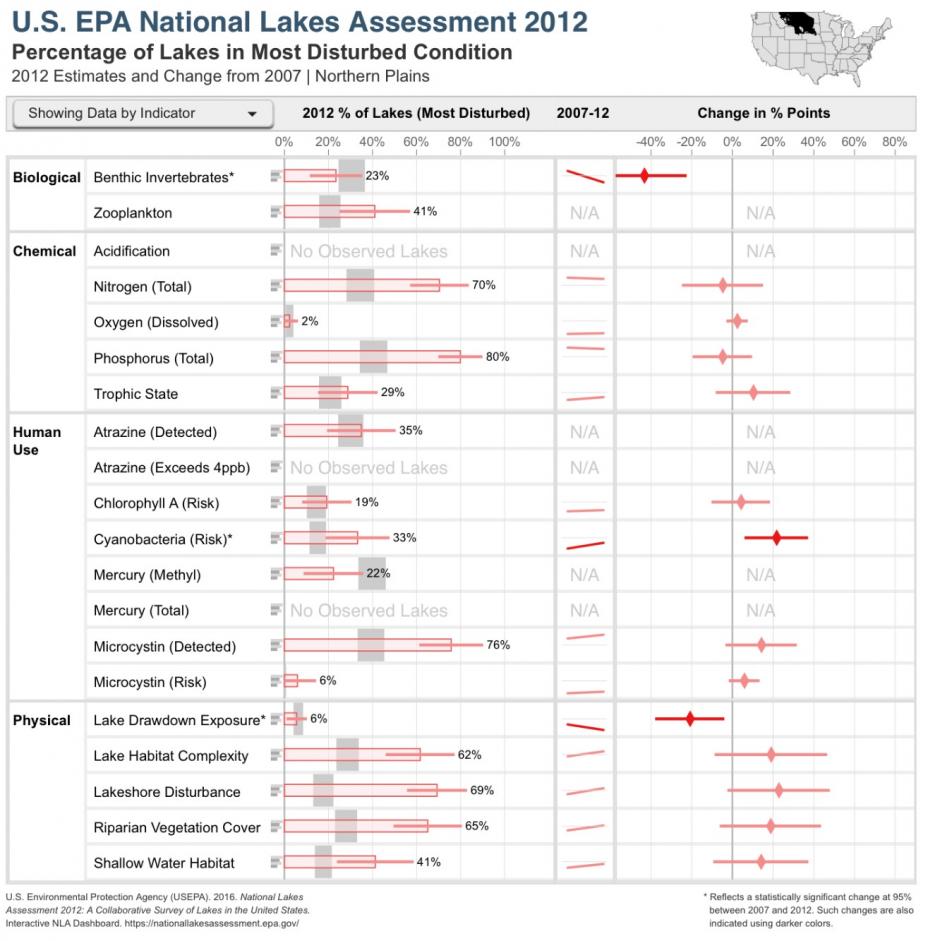Northern Plains Ecoregion - NLA 2012 Results
- Overview
- Coastal Plains
- Northern Appalachians
- Northern Plains
- Southern Appalachians
- Southern Plains
- Temperate Plains
- Upper Midwest
- Western Mountains
- Xeric
- NLA Dashboard
A total of 2,740 lakes are represented by the NLA in the Northern Plains ecoregion. Of these lakes, 54% are natural and 46% are man-made.
Key Results
Trophic State and Key Stressors: The NLA uses trophic state as an important indicator of lake condition and assesses the extent of key stressors in the nation’s lakes.
- In the Northern Plains, 29% of lakes are rated as most disturbed based on trophic state, 43% are eutrophic, 12% are mesotrophic, and 16% are oligotrophic.
- The most widespread stressors assessed in the Northern Plains are phosphorus (80% of lakes), nitrogen (70%), and lakeshore disturbance (69%).
Human Use Condition: Cyanobacteria is one of three algal toxin related indicators assessed in the NLA (see also chlorophyll a and microcystins). It serves as a proxy for the presence of algal toxins.
 Lake sampling in North Dakota for the NLA 2012. Photo: Aaron Larsen, NDDOH.
Lake sampling in North Dakota for the NLA 2012. Photo: Aaron Larsen, NDDOH.- Based on cyanobacteria cell counts, 33% of lakes in the Northern Plains are in the most disturbed condition (i.e., pose a high risk of exposure to algal toxins).
Change from 2007 (for lakes >4 hectares)*:
- For the Northern Plains, the NLA reports a 43% decrease in the proportion of lakes in most disturbed condition between 2007 and 2012 based on the condition of benthic macroinvertebrates.
- The proportion of lakes in most disturbed condition increased by 22% based on the cyanobacteria risk index.
- There was also a decrease of 21% in the proportion of lakes in the most disturbed condition based on the lake drawdown exposure indicator.
To access more indicator graphics please visit the interactive NLA Dashboard.
* The change analysis is based on information from two points in time – 2007 and 2012. The change in condition analysis only considers lakes 4 hectares and larger because smaller lakes were not sampled in 2007.



